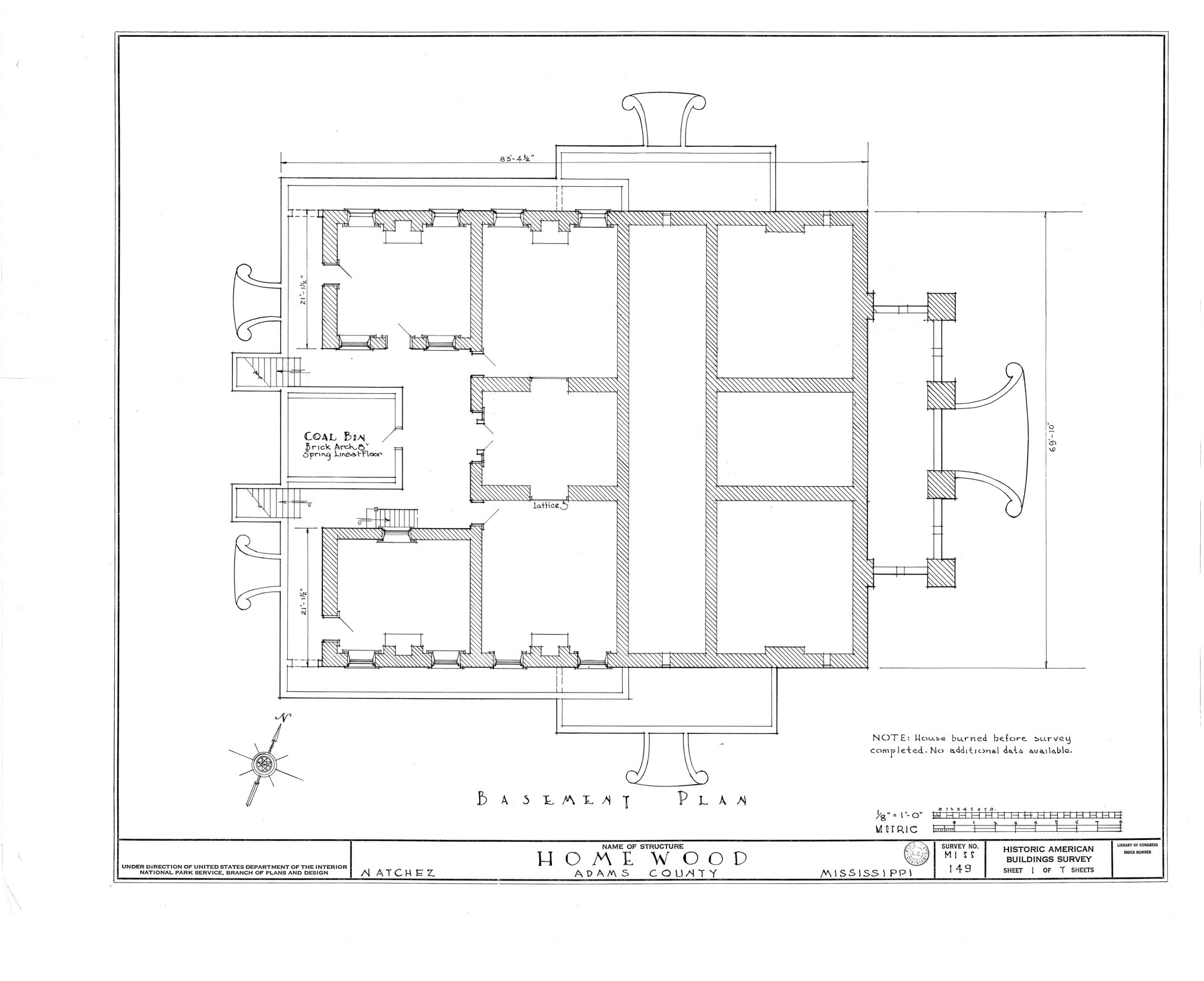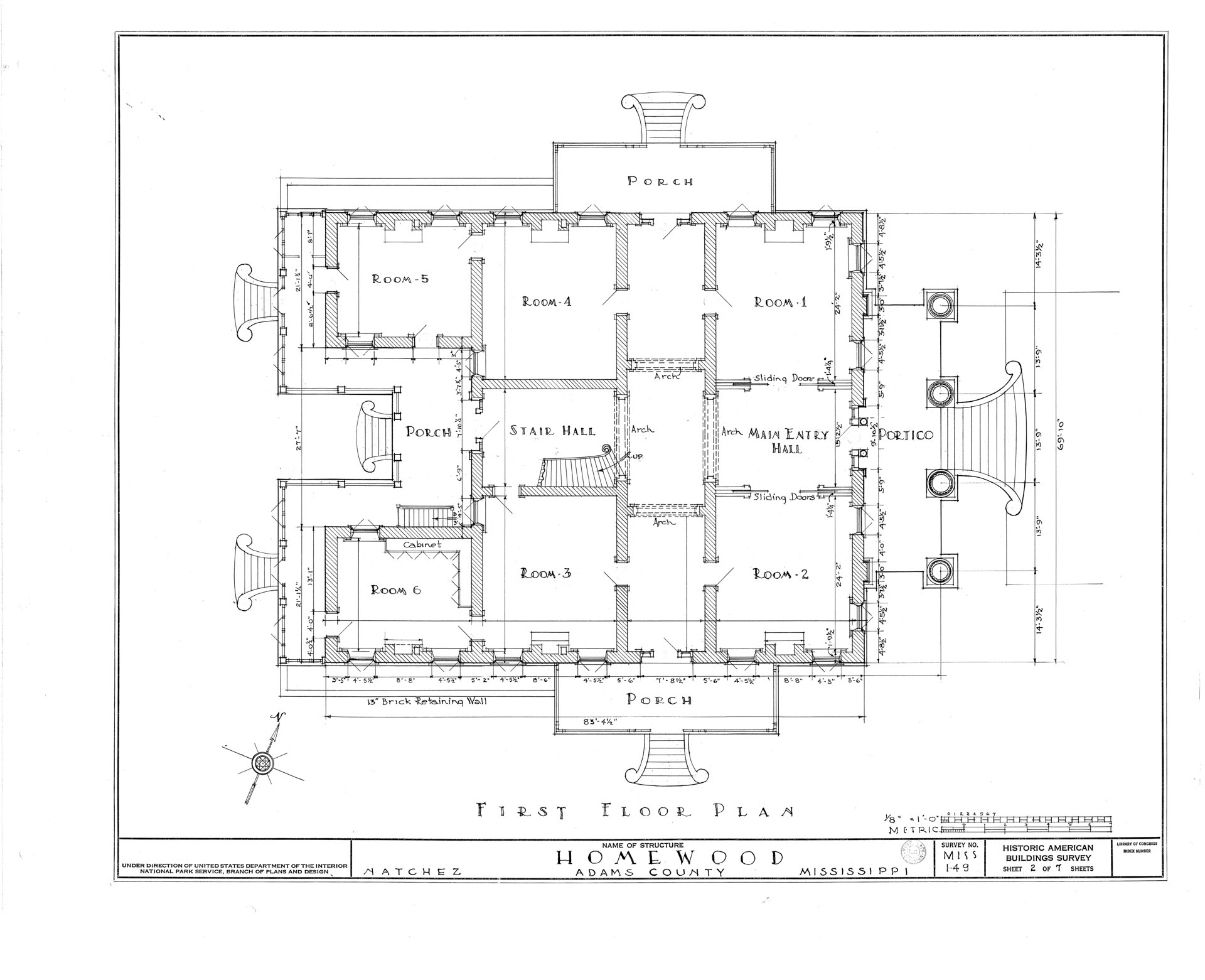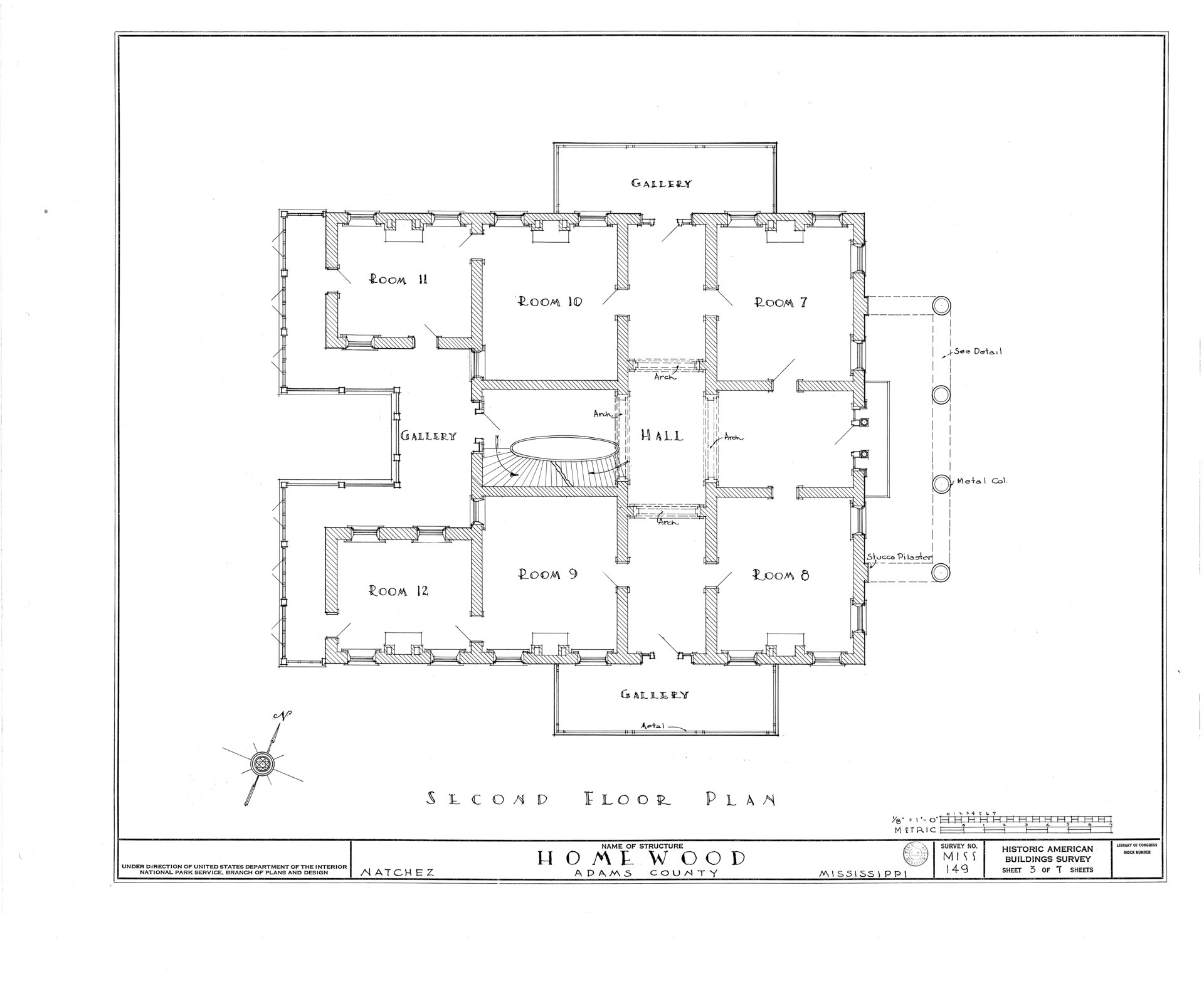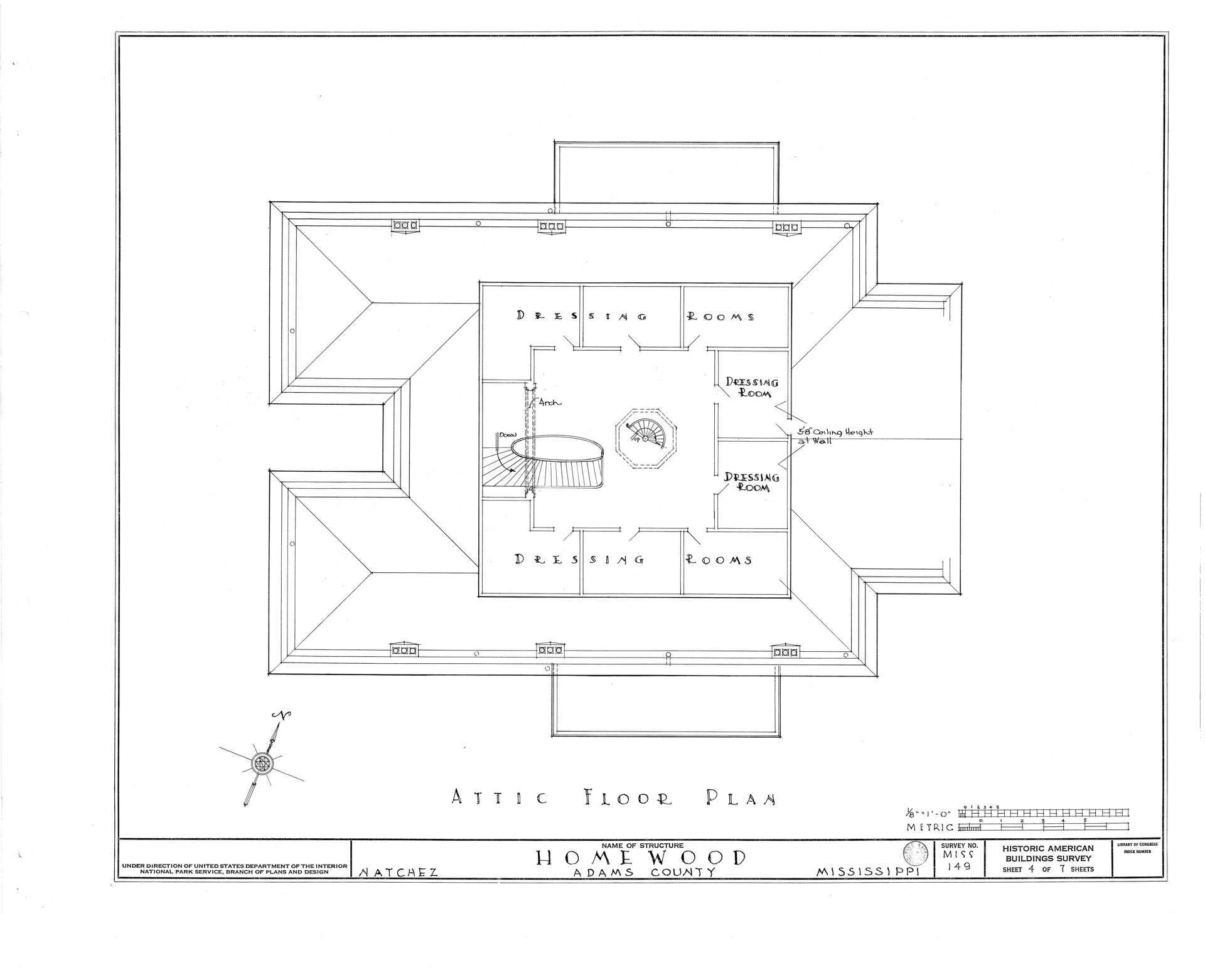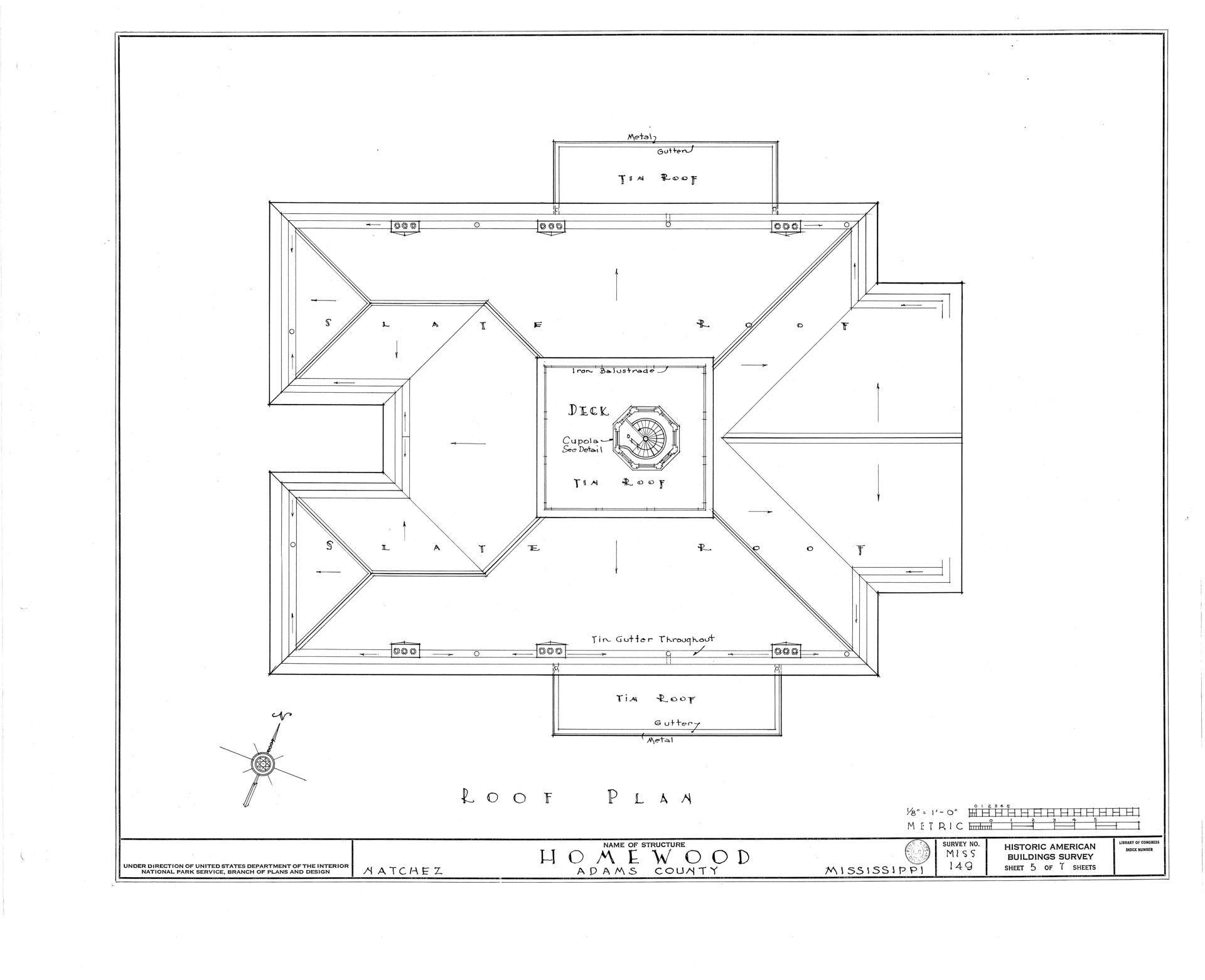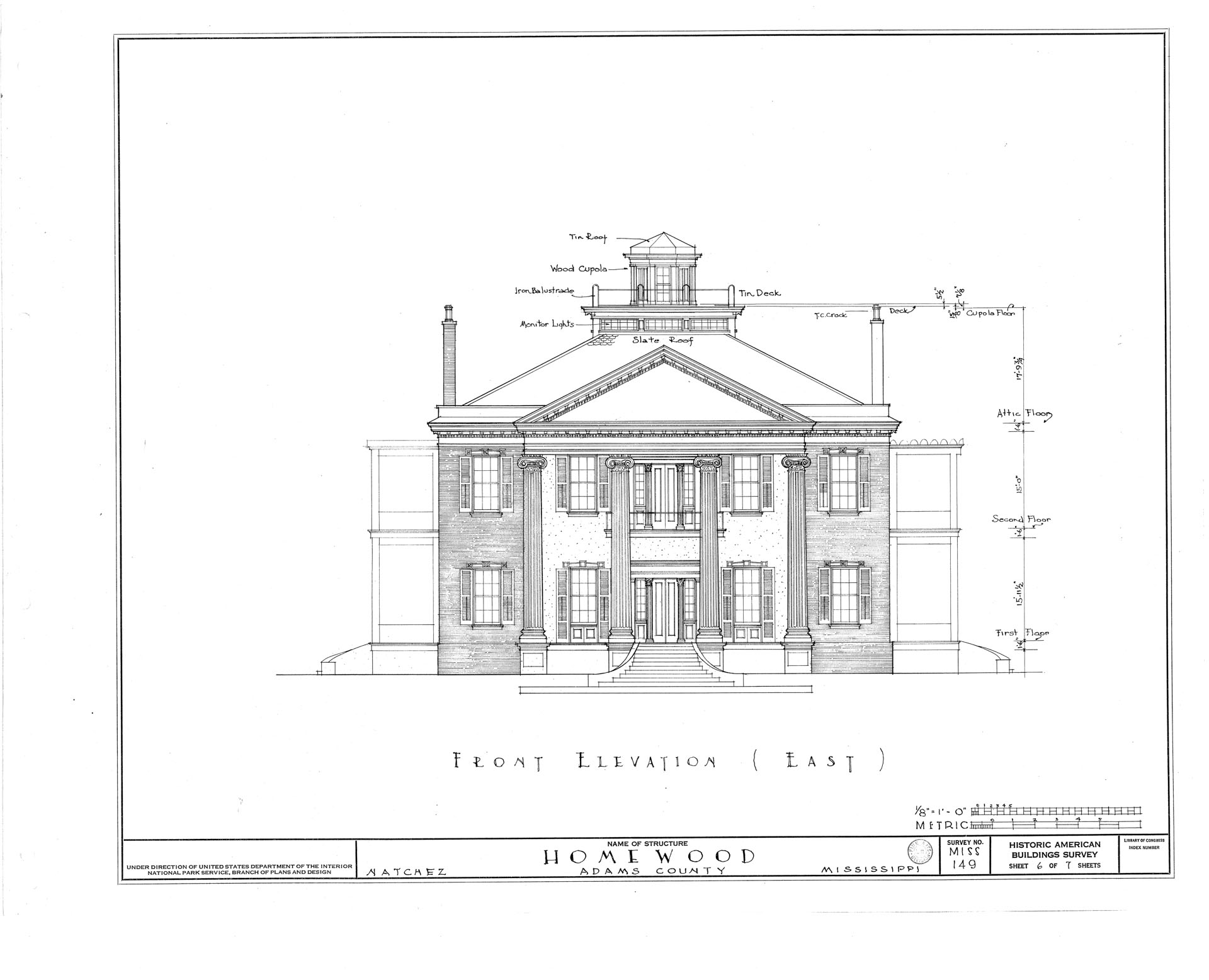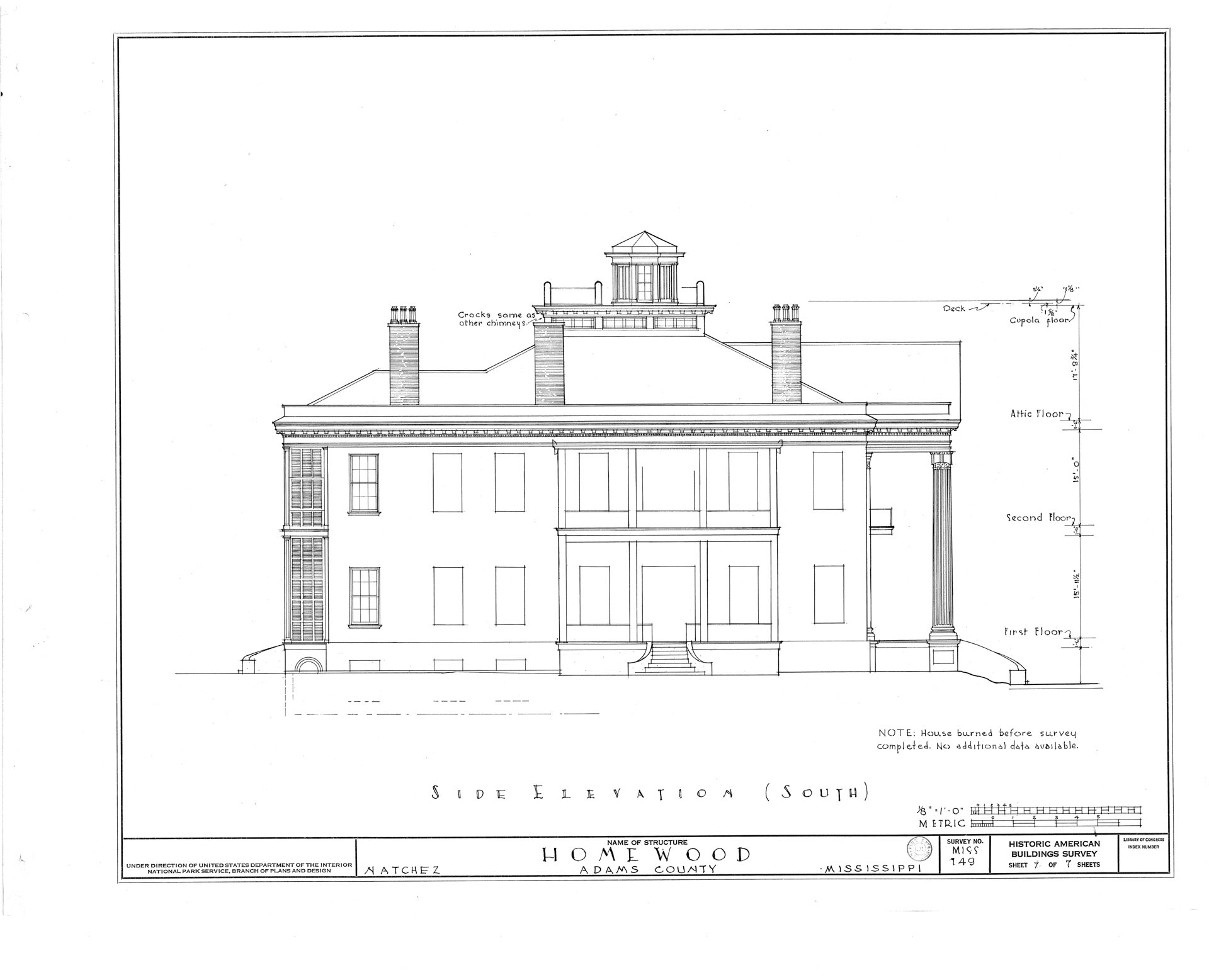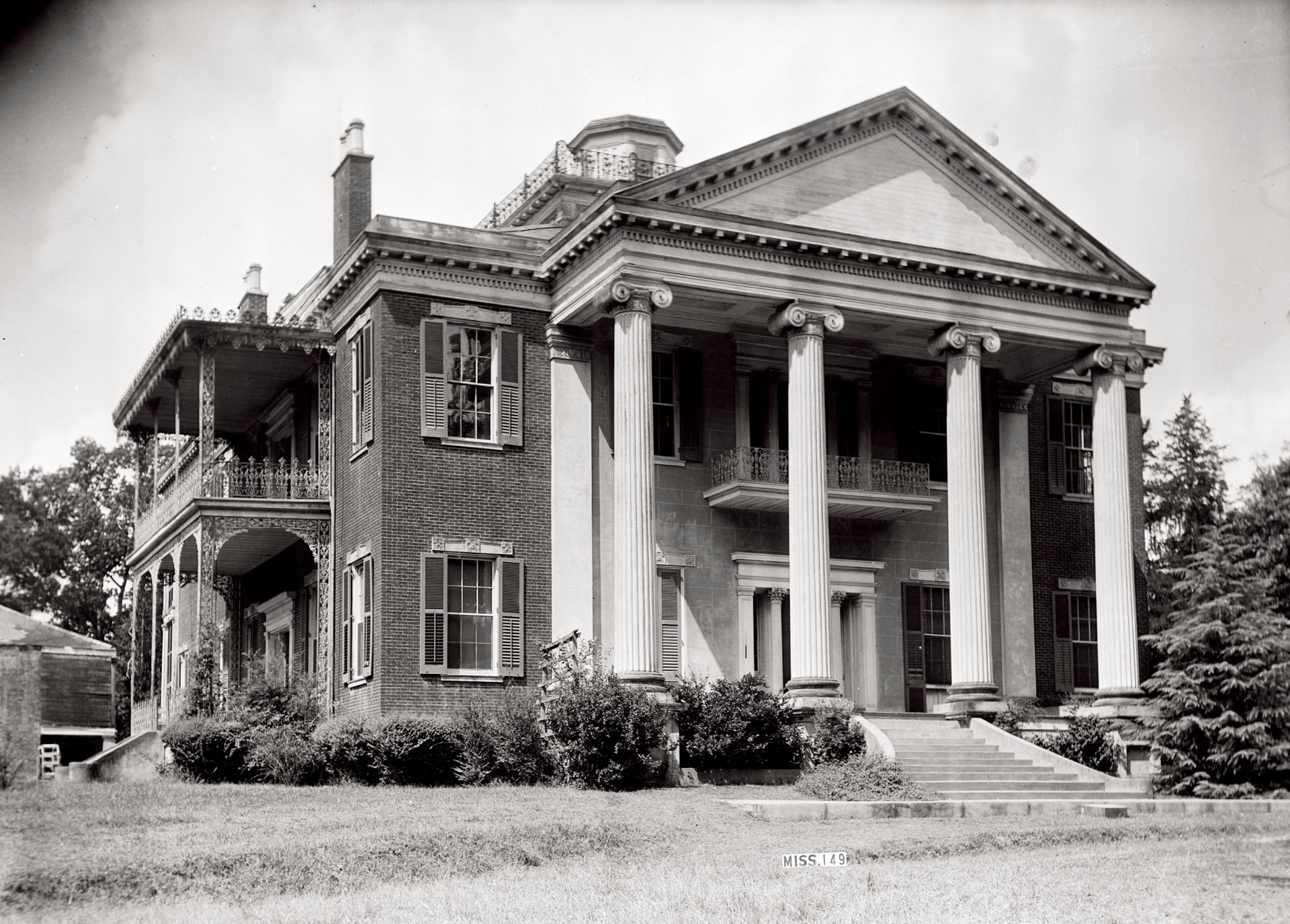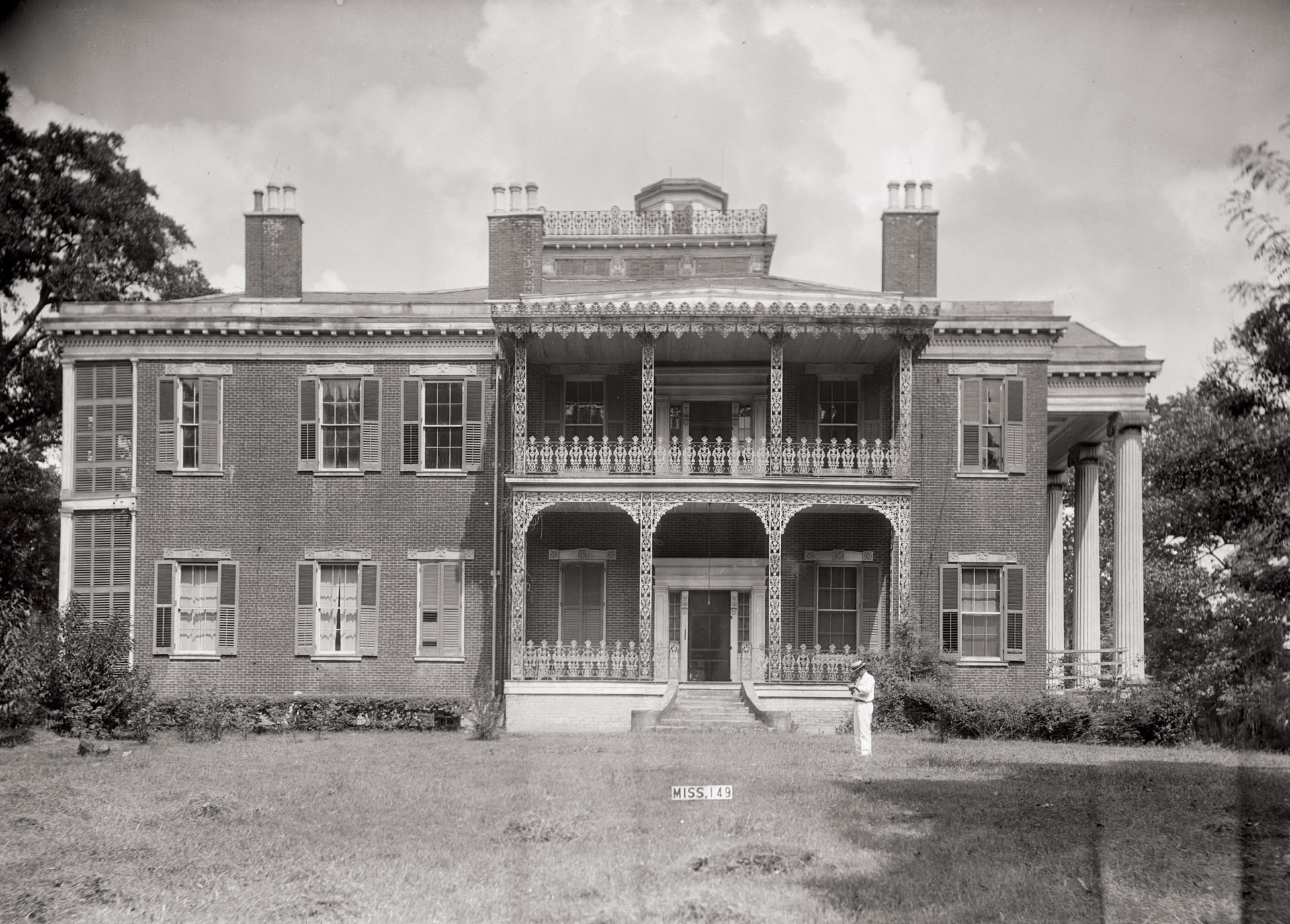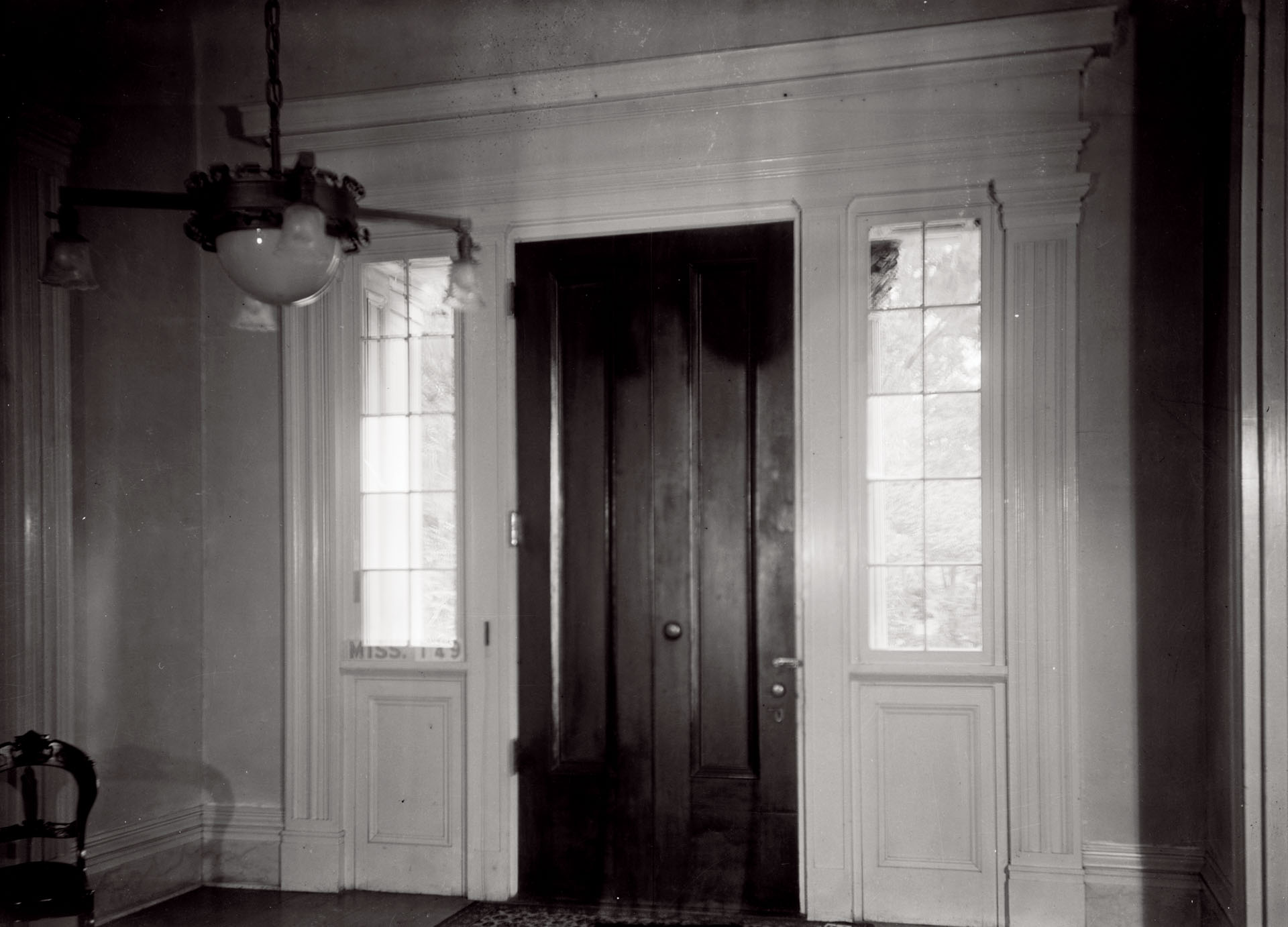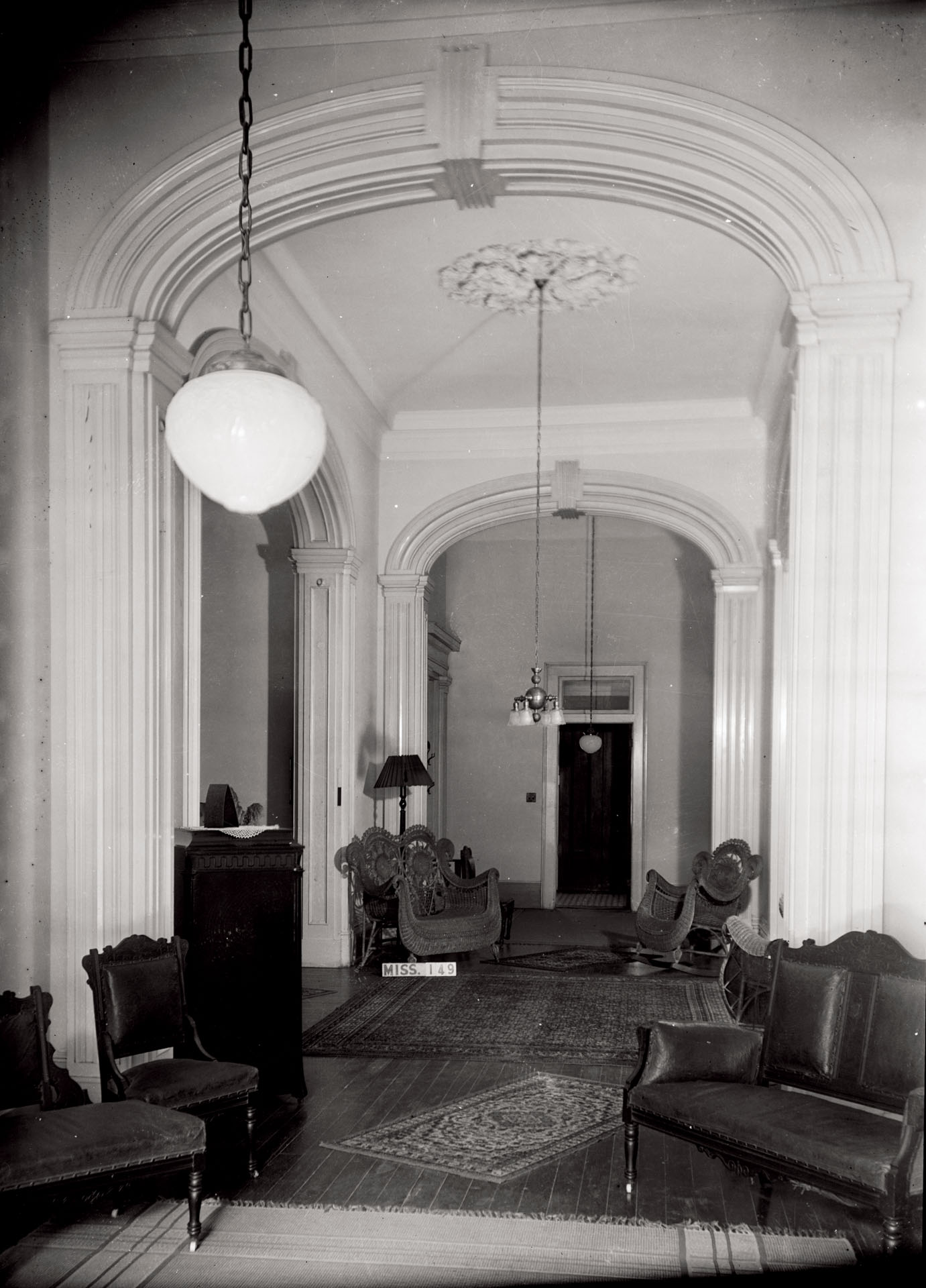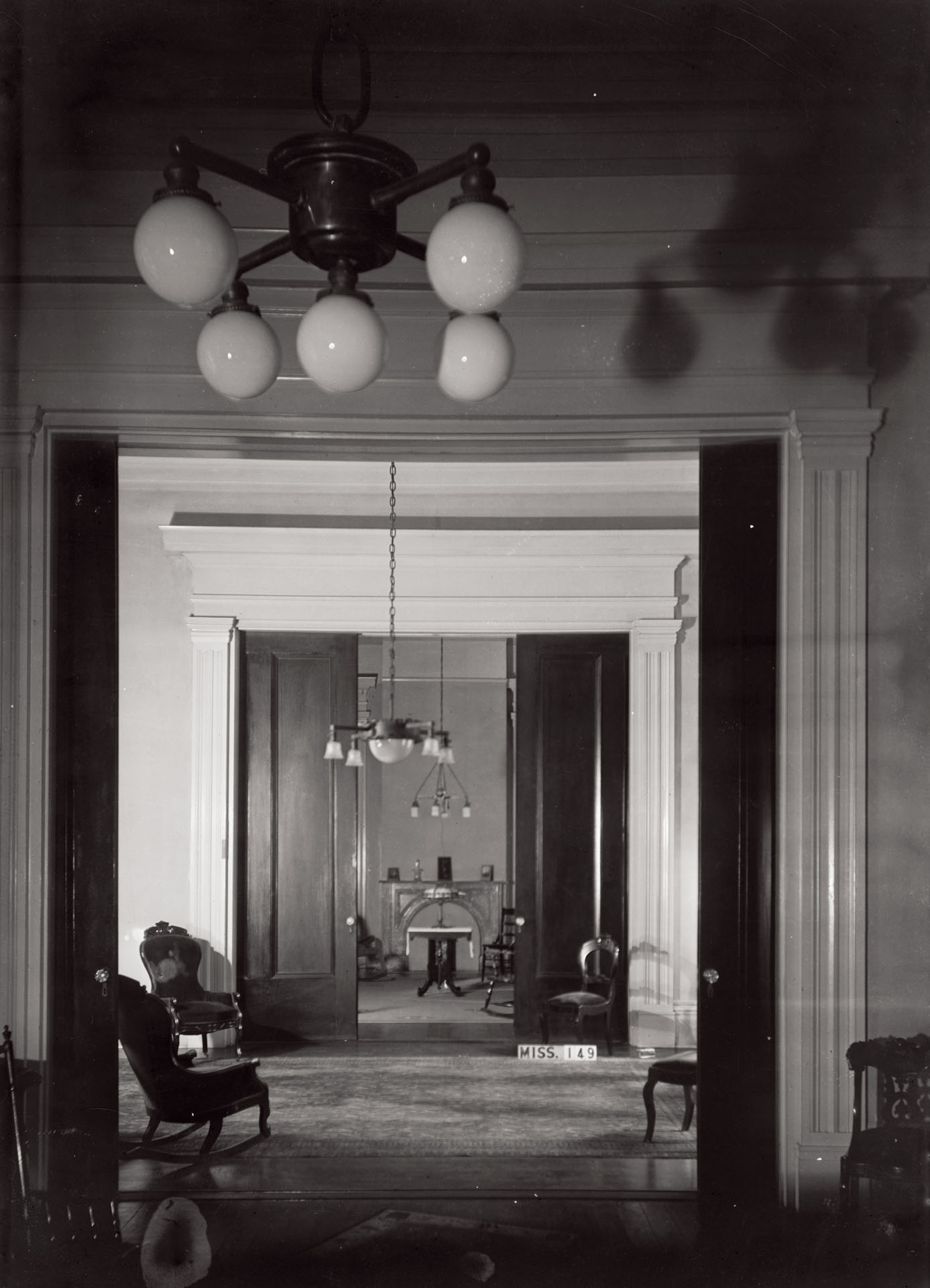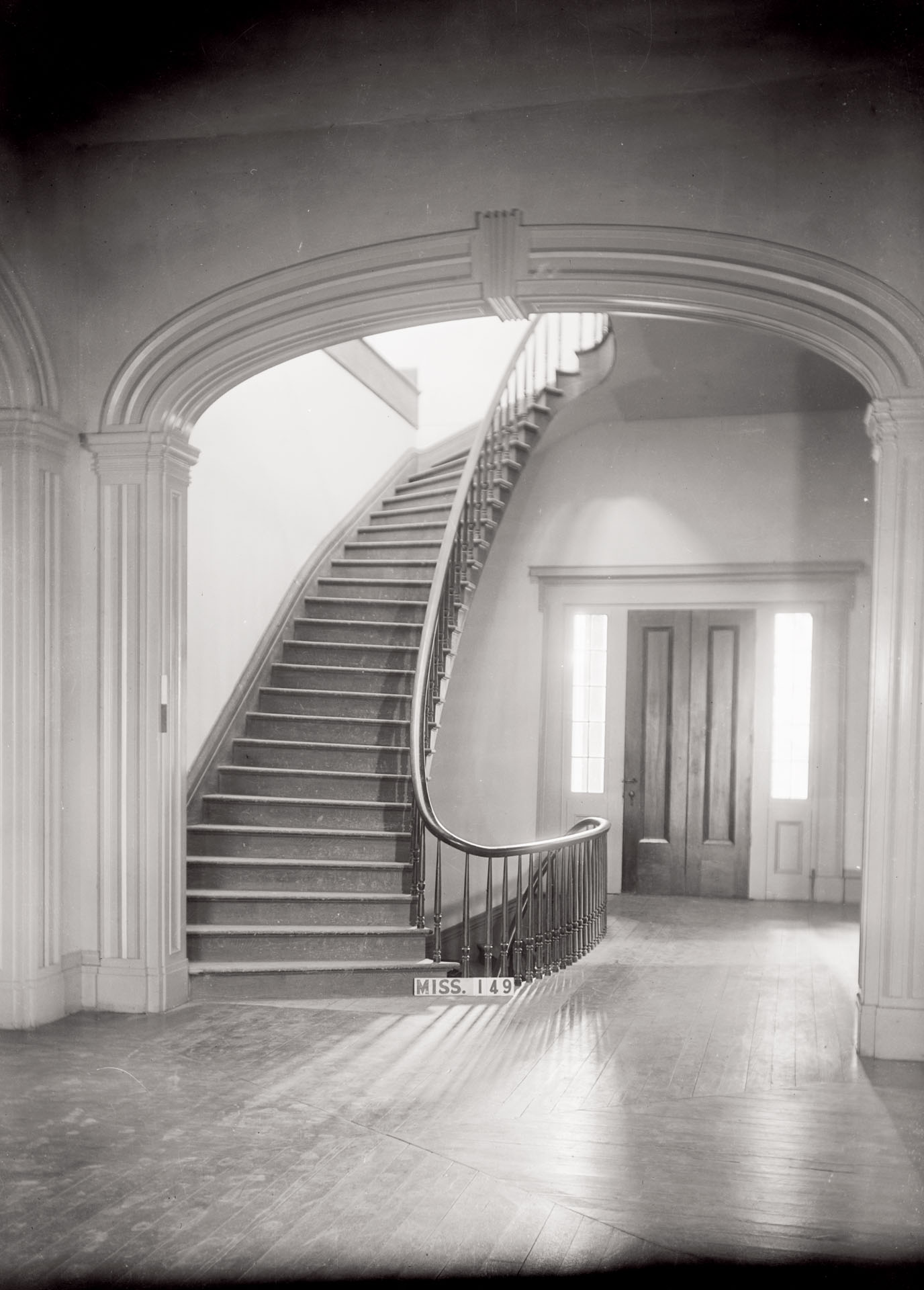Pine Ridge Road, Natchez, Adams County, Mississippi
Homewood, an Antebellum plantation in Natchez, Mississippi, stood as a testament to architectural grandeur until its tragic demise in the 1940s. Built in 1860 by millionaire planter David Hunt for his daughter Catherine and her husband William S. Balfour, this Greek Revival masterpiece took five years to complete under the direction of Scottish architect James Hardie. The house, nestled amidst a park-like setting of live oak trees, boasted intricate wood trim and metal columns adorned with Ionic capitals, exuding an aura of timeless elegance.
Throughout its history, Homewood witnessed significant events, including Mr. Balfour’s service as a major for the Confederate States Army during the Civil War. Remarkably, the house escaped destruction during the tumultuous years of 1861-1865. However, the family’s fortunes dwindled due to the absence of slave labor before the war, prompting Catherine and her sisters to seek their father’s real estate inheritances in Cincinnati, Ohio, for financial stability.
In 1907, the Balfour family sold the property to Mr. and Mrs. William J. Kaiser, who transformed it into a dairy farm. Notably, the grounds and porches served as the backdrop for the 1915 film “The Birth of a Nation.” Homewood gained public recognition when it joined the annual Natchez Pilgrimage Houses tour in 1932, becoming a beloved landmark in the community.
In 1937, the Kaiser family sold the property to Mr. and Mrs. Swan of New York, who invested in modernizing the mansion during the final years of the Great Depression. Tragically, in 1940, Homewood fell victim to a devastating fire, suspected to be intentional. Despite the destruction, the kitchen dependency building and the old carriage house survived and were repurposed.
Examining the exterior, Homewood boasted two-and-a-half-thick brick walls, towering at thirty-five feet high. The front porch featured metal columns with graceful Ionic capitals, and the custom door showcased sidelight windows with unique imported pink glass from Belgium. Intricate metal lace-work railings adorned the two-story porches, accentuating the mansion’s charm.
Inside, the mansion spanned five floors, including a basement, two main floors, an attic, and a cupola with an adjoining widow’s walk. Decorative mouldings and trim adorned every room, showcasing the craftsmanship of the era. Cordovan marble fireplaces, faux-painted wood baseboards, and handcrafted ceiling medallions added to the opulence of the interior.
Homewood’s architectural elements reflected meticulous attention to detail, from the winding staircase with fan-shaped steps to the solid mahogany pocket doors that transformed the library and parlor into a 72-foot-long ballroom. Despite its tragic end, Homewood’s legacy endures, reminding us of the beauty and grandeur of the past.

